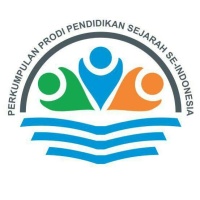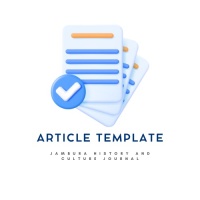Analisis Pola Penempatan Bangunan Perkantoran Kota Tambang Pada Masa Kolonial: Studi Kasus Kota Sawahlunto
Abstract
Keywords
Full Text:
PDFReferences
Amran Rusli, (1981). Sumatera Barat Plakat Panjang. Jakarta: PT Sinar Harapan
Arkeologi Universitas Jambi Angakatan 2016 . 2017. Laporan Kuliah Lapangan Metode Arkeologi 3 - Kota Sawahlunto.
Bintarto dan Hadisumarno. 1982. Metode Analisis Geografi, Yogyakarta : Gadjah Mada University Press Kota Sawahlunto, Provinsi Sumatera Barat.
Erman Erwiza, 2005.Membaranya Batu Bara Konflik Kelas dan Etnik Ombilin Sawahlunto-Sumatera Barat 1892-1996. Depok: Desantara,.
Fazhuni Amril, 2019. Pola Penempatan Bangunan Perkantoran di Kota Tambang Kolonial di Kota Sawahlunto, Skipsi : Arkeologi Universitas ambi.
Grha Sabha Permana. 2017. Peran Penelitian ilmu kebumian dakam Pembangunan Infrastruktur di Indonesia, Seminar Nasional Kebumian Ke 10.
Johnson, James H.1975. Urban Geography; an introduction analysis. Pergamon Press: United Kingdom.
Kumrur Adenlin Veronica, 2010.Pembangunan kota & kondisi kemiskinan perempuan, PPLH-SDA Unsrat Press
Lindayanti. Dkk. 2015. Pertambangan dan Pengangkutan Batu Bara Ombilin Sawahlunto Pada Masa Kolonial. Pusat Study Humaniora UNAND.
Pemerintah Kota Sawahlunto, Revisi RPJMD Kota Sawahlunto 2013 - 2018 , 2018.
Sjoberg, Gideon. (1960). The Pre-industrial City. Past and Present New York: The Free Press.
Sukendar, Haris dkk. 1999. Metode Penelitian Arkeologi. Pusat Arkeologi Nasional.
Tanudirdjo, Daud Aris. (1989). "˜Ragam Metode Penelitian Arkeologi dalam Skripsi Karya Mahasiswa Arkeologi Universitas Gadjah Mada" Laporan Penelitian, Yogyakarta ; Fakultas Sastra Universitas Gadjah mada
Tim. (2008). Metode penelitian Arkeologi, Jakarta : Pusat Penelitian dan Pengembangan Arkeologi Nasional.
Yonni Saputra. (2012). Jejak De Grave dalam Kenangan Sawahlunto, Penerbit ombak, Yogyakarta.
DOI: https://doi.org/10.37905/jhcj.v5i1.26306
Refbacks
- There are currently no refbacks.

Jambura History and Culture Journal (ISSN Online: 2686-1070 | ISSN Print: 2654-6388) is licensed under a Creative Commons Attribution 4.0 International License.











